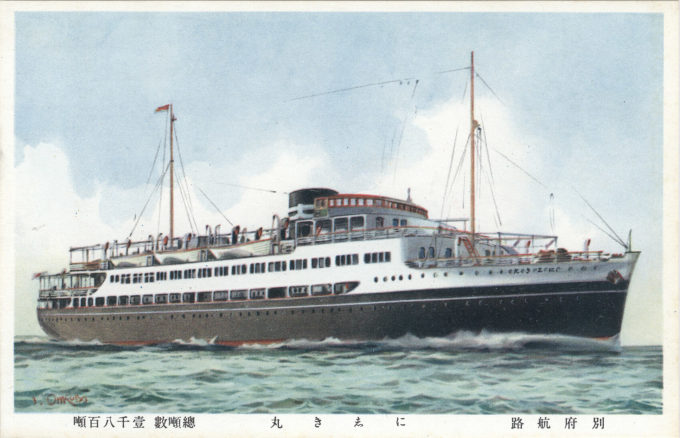See also:
M.S. “Oto-maru”, Inland Sea routes, O.S.K. Lines, c. 1930.
“Principal services of O.S.K. Line”, Osaka Shosen Kaisha, c. 1930.
The Nishiki Maru was launched in 1934, and started service on the Beppu route. It was one of the first ships to comply with a new Japanese safety regulation requiring watertight compartments on seagoing vessels, so that a ship could maintain buoyancy even if two compartments were flooded. Design engineer Dr. Haruki Watsuji took great pride in his design for this vessel, and said “The Nishiki Maru is the most balanced vessel on the Inland Sea.”
The vessel served briefly as a barracks ship for the German U-boat crew of U-511 when that submarine arrived at Otake, Japan, in September 1943 for transfer and training to the Imperial Japanese Navy after a 90-day voyage from Germany’s U-boat base at Lorient, France.
‘The maneuvering exercises were held in the Inland Sea [and] the spa steamer Nishiki Maru was made available to us as a barracks ship for this time. The ship sailed constantly and also served as a target ship during demonstrations of night attack exercises.’ – U-511 4th Patrol Kriegstagebücher [War diary]
Nishiki Maru was sold in 1978 sold to a Thai company, renamed Asava Devi; sold again in 1981, renamed Samaa Dhan, but in 1982 burned in the harbor of Male, Maldives, and scrapped.
- 1st-Class Dining Room. O.S.K. “Nishiki Maru”, c. 1935.
- Smoking lounge. O.S.K. “Nishiki Maru”, c. 1935.




